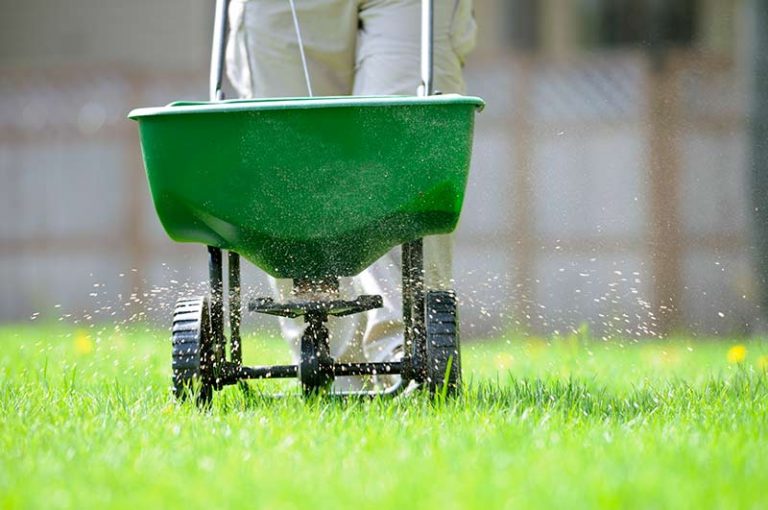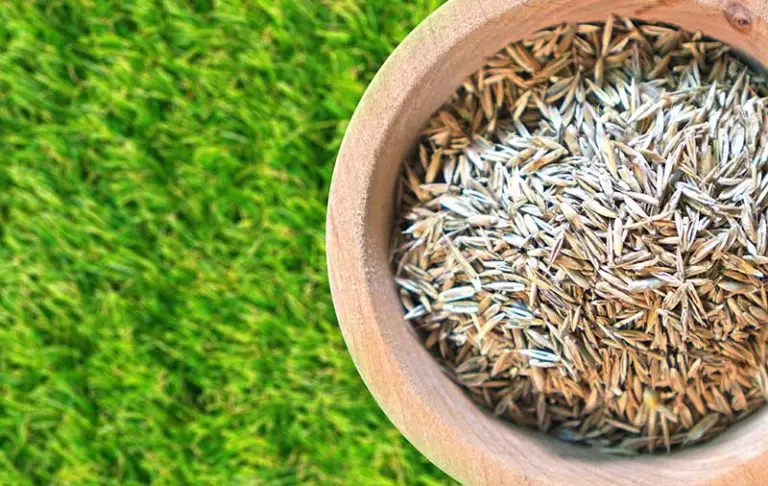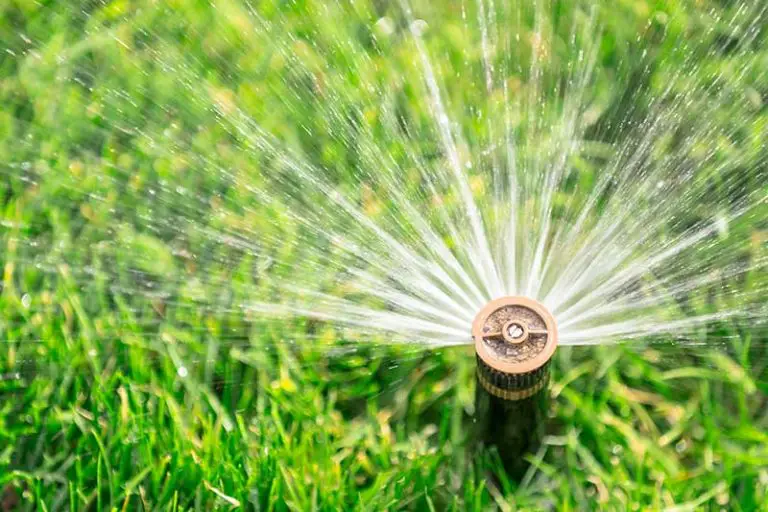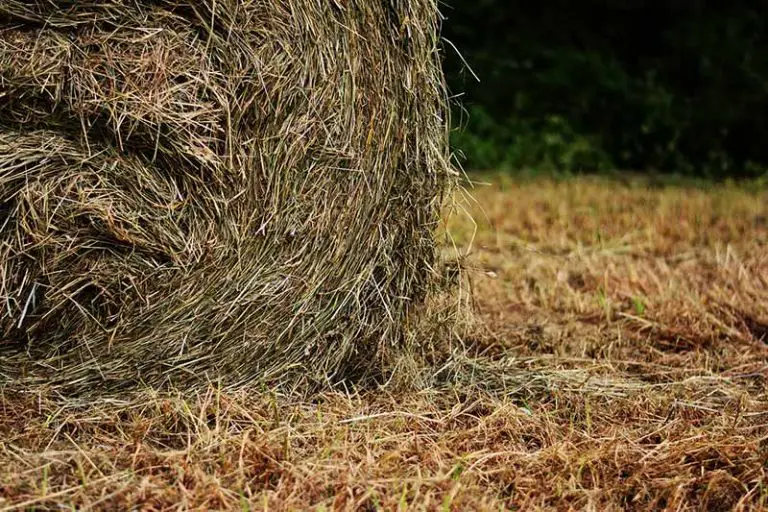How Often to Water Grass Seed
Whether you’re reseeding to revive an existing lawn, or trying to grow a brand new lawn from scratch, growing grass is a delicate process that requires meticulous attention to detail. One of the most important elements of this process is knowing when and for how long you should water your lawn.
Newly planted grass seed requires different amounts of water at its various stages of growth, so maintaining the ideal level of moisture in the soil for each stage ensures that you will end up with a thick, healthy lawn that is hardy and resistant to the elements.
This guide provides specific information on how often to water grass seed that has been newly planted. For information on when and how often to water an established lawn, see our article Best Time to Water Grass & How Long to Water For.
When is the Best Time to Plant Grass Seed?
To give your chosen grass seed the best chances of growing into a lush green lawn, you should first take into consideration what type of grass it is, the kind of climate you live in, and the time of year you’re planning on planting it.
Grasses are generally classified into two categories based on the climate in which they thrive the most:
- Cool season grasses prefer cooler temperatures and will grow best in temperate and northern climates
- Warm season grasses prefer warmer temperatures and will grow best in southern climates
While cool-season grasses are able to grow in the south and warm-season grasses are able to grow in the north, they both prefer to be grown in soils in their native regions.
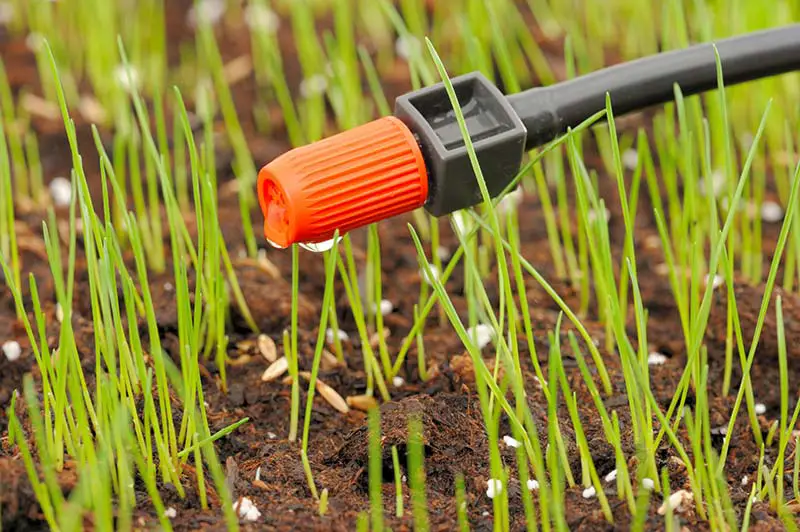
Cool Season Grasses
Some examples of popular cool-season grasses include:
- Fine fescue
- Tall fescue
- Kentucky bluegrass
- Rough bluegrass
- Annual ryegrass
- Perennial ryegrass
Cool-season grasses are also known as “northern grasses” because they prefer cooler climates, and are well adapted to be resistant to the harsh conditions of winter. They will grow at their best in temperatures between 60-80 degrees Fahrenheit. This makes it ideal to plant new cool grass seeds early in the fall, for example in the weeks surrounding labor day, as this time of year is usually mild enough for seed germination without being so hot as to prevent it.
You have the option of planting cool-season grasses during the spring, as temperatures are usually still mild and there is often a relatively high amount of rainfall. The only downfall of planting cool grasses this time of year is that your new seedlings will most likely have to compete with weeds – this can be remedied with a decent weed and feed starter fertilizer such as the 23001 Turf Builder Triple Action Built for Seeding produced by Scott’s. With that said, planting cool grasses in the fall is the best method to avoid this issue.
Warm Season Grasses
Examples of popular warm-season grasses include:
- Bermuda grass
- St. Augustine grass
- Centipede grass
- Zoysia grass
- Carpet grass
- Bahiagrass
Warm-season grasses are those known as “southern grasses” as they see the best growth in warmer climates and lack the sort of resilience to winter conditions that northern grasses have. They will thrive in temperatures of 75-90 degrees Fahrenheit, making spring or early summer in their native climates the best time to plant new warm-season grass seeds.
It is important to note that you should avoid planting warm-season grasses at the hottest part of the year, but instead aim for when temperatures are still reasonably warm. These grasses grow best during the warmer months so planting them at this time will give your lawn a better chance of seeing established growth during the first season.
How to Water New Grass Seed
When Overseeding an Existing Lawn
When it comes to watering your lawn, you’re probably used to watering it occasionally and applying lots of water that penetrates deeply into the soil. However, if you’re planning on reviving your lawn with new grass seed, you’ll need to start watering every day and reducing the quantity of water you use each time.
If you’re watering using sprinklers, set automatic timers so that they turn on for about 5-10 minutes early in the morning, then set them to come on again at midday. Observe the soil and adjust the amount of time you set them to come on for, as sprinklers vary product to product on their flow in gallons-per-minute.
If you’re watering by hand or by a hose-end sprinkler, you must consistently and evenly apply water to the planting area so that there is an equal level of moisture throughout the planting area, applying less water to the shadier areas.
When Growing a New Lawn From Scratch
If you have properly prepped your planting area for the sowing of the new grass seed, you will have tilled the soil to loosen it up for the new seedlings to grow. Soil that has been loosened in this way will retain large amounts of water, so you should take extra care not to over-water the ground when it’s in this state.
Some soil types will get particularly spongy after watering, and walking on the soil when it’s saturated like this can leave unwanted depressions in the surface, as well as resulting in soil compaction. For this reason, you should try to avoid walking on the planting area when it’s saturated with water, or else you will likely end up having to level your yard to get rid of the irregularities in the soil surface.
You should aim to keep the top inch of soil consistently moist and adjust your watering routine on this basis, as well as factoring in your soil type, method of watering, and the current weather conditions in your area. A good rule of thumb to remember is that new grass seed doesn’t require lengthy watering times, as it is unnecessary for the water to penetrate that deeply into the soil in the early stages of growth.
Adding Mulch Before Watering New Grass Seed
Adding a layer of mulch to the soil after laying down new grass seed is another step you can take to improve the conditions of the planting area for the growth of your seedlings. This involves covering newly planted seeds with a mulching method like straw, compost or, or plastic lawn sheeting. Covering the planting area with your chosen mulch keeps the soil moist and protects the seeds from being washed away or eaten by birds. Mulching also helps to strengthen the quality of the soil and helps the fight against weed growth.
How Often to Water Grass Seed
Knowing how often to water grass seed is essential to ensuring you see strong healthy germination of your seedlings that continues on into the growth of a full, green, lush lawn.
1. Before Planting Grass Seed
The watering schedule for your new lawn should begin before you have begun to spread the grass seed on the ground. Seeds are designed by nature to respond to moisture, so you can get your seedlings off to a good start by watering the planting area several days before you plan on first planting them.
Water the planting area to a depth of around 6-8 inches, once a day for 2-3 days before planting. You can easily check how deep the water has penetrated the soil by sticking a long screwdriver or similar tool into the ground; if you’re able to push 6-8 inches into the soil without feeling too much resistance then it’s properly saturated to promote seed germination.
You can further improve the conditions of your soil at this stage by carrying out a soil pH test. You can either have this test performed for you at a professional laboratory, or do it yourself at home with a simple pH testing kit such as this Soil pH/Moisture/Light Testing Meter from Kensizer. The results of this test will help you understand the soil’s pH level as well as the level of nutrients currently present in the soil. If the results show that your soil pH is incorrect or you’re lacking any key nutrients needed by grass seed in the early stages of growth, you may need to adjust soil pH by adding compost or another pH adjusting material to make sure your planting area is in optimal condition before spreading the grass seed.
2. Directly After Planting Grass Seed
You should use a suitable seed spreader to spread the new grass seed evenly throughout the planting area – we recommend using this Mini Broadcast Spreader from Scott’s. As soon as you have spread the grass seed, you should water the area for anywhere between 5 and 10 minutes to gently moisten the top 3-4 inches of soil, without making it feel soggy or spongy.
Take care to not over-water at this stage, otherwise you may wash away your seeds completely, resulting in uneven growth or no growth at all. If you notice puddles on the surface of the soil you have overwatered, and your seeds are at risk of being unevenly distributed.
3. During Grass Seed Germination
The earliest stages of the growth process, over the days and weeks leading up to the grass seed’s germination, are when you need to take the most care to keep the planting area properly watered. You should first find out your grass seed germination time, or in other words, how long it will take your chosen grass seed to grow, as different types of grass will germinate at different rates.
Again, you will need to keep the ground moist without over-watering to the point that the soil is soggy and waterlogged. The frequency of how often you should water your new grass seed depends on factors such as the soil type in your planting area, the amount of sun it sees, and its surface type. As a general rule, you should water your new grass seeds 2-3 times a day for periods of around 10-15 minutes each time, moistening the soil to a depth of 1-2 inches. Aim to keep the top couple of inches consistently moist throughout this stage.
4. After Grass Seed Germination
As the seeds complete their germination process, you will see them beginning to sprout through the top layer of soil. The seedlings won’t all sprout at the exact same time, as they will all be at slightly different depths in the soil and will absorb water at different rates. Also, the blends that new grass seeds usually come in contain some seeds which are lower quality than others, which will take longer to germinate than the higher quality ones. You should keep the surface of the planting area consistently moist until every seedling has germinated and sprouted through the soil.
The new sprouts will still need regular watering as their newly formed roots are growing deeper down into the soil to absorb the moisture beneath them. The roots and shoots of the new sprouts will grow stronger and become more resilient each day, and when the new grass starts to grow densely, you can gradually reduce the amount of watering you’re doing. For example, if you’re currently watering three times per day, cut down to two times per day, and look out for signs of drying. If your new lawn seems to cope well with this, then try cutting down again from two short watering sessions to one lengthier water.
How Long to Water Grass Seed
How long you should water your lawn is dependent on the condition of your soil and whether you have a sprinkler system set up. Generally speaking, you should water new grass seed for 10-15 minutes once in the morning and once in the evening to provide the planting area with enough water to maintain moisture in the first couple of inches of soil.
As the new seedlings germinate, you will see them beginning to sprout through the top layer of soil. At this point, you should start watering less frequently but aim to penetrate to a deeper level of the planting bed, as this encourages the newly established grass roots to extend and grow deeper into the soil.
Following how your grass seedlings are progressing through the different stages of growth, you should gradually begin to increase the watering sessions you do in the morning and decrease the ones you do in the evening. Ultimately, you’ll want to end up solely doing your watering between the hours of 6am and 10am, as this is when temperatures are relatively cool and the water is at a lesser risk of being evaporated by the sun. After the seeds have grown into an established lawn, they will usually require around 1 inch of water per week, whether that comes from natural rainfall or requires a manual top-up.
When is the Best Time to Water Grass?
The time of day at which you water your new grass seed is another critical factor in giving your seedlings the best conditions for growth. The best time of day to water new grass seed is in the morning and evening, as these are the parts of the day when temperatures are coolest.
Warm temperatures and direct sun will cause the water to evaporate from the soil, so watering in the morning and evening will reduce the amount of evaporation and water waste. This allows the soil to fully absorb the water and thoroughly nourish the grass seedlings. If your usual schedule prevents you from watering your seedlings in the morning, make sure to water them in the late afternoon, but avoid doing it at night.
What to Do if You Forget to Water New Grass Seed
Your new grass seeds aren’t likely to suffer too much if you accidentally miss a day of watering, but this really isn’t ideal for them, as dry spells in the soil may disturb seedling growth. If you have missed a day of watering, you should try to remedy the planting area with water as soon as possible.
The best thing you can do if you miss a session or two of watering your new grass seed is to return back to your usual watering schedule and make sure you retain the level of moisture in the planting area going forward.
You can also follow these extra tips to remedy an under-watered lawn:
1. As soon as you realize you’ve missed a watering session, rehydrate the soil fully by watering it to the point that the water has penetrated to a depth of about 5 inches.
2. Try not to disrupt the soil by avoiding walking or placing anything on it.
3. Remember to water in the morning as this is when temperatures are cooler and the water is less likely to be evaporated by the sun.
4. If you have forgotten to water your new grass seed for a longer period of time or the soil is in a particularly poor condition, consider applying some high phosphorus seed-sprouting fertilizer to give your sprouts an extra nutritional boost.


